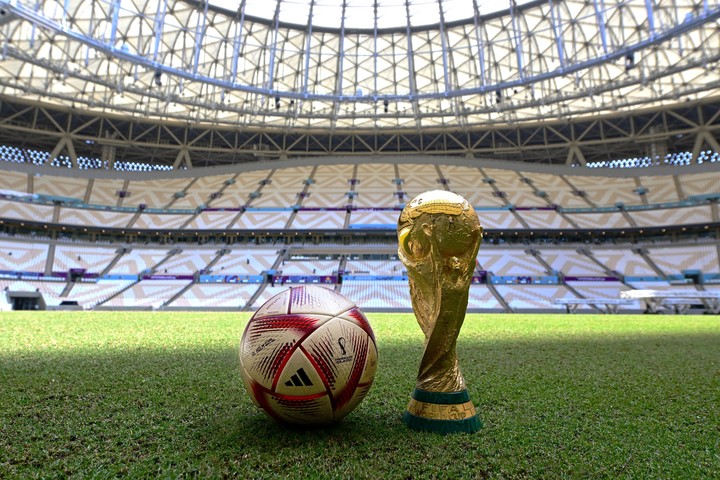
El Mundial, el Super Bowl, los Juegos Olímpicos y, más recientemente, la Fórmula 1 se han sumado, impulsada por la ‘colapintomanía’. Los eventos deportivos atraen a cada vez máspersonas en todo el mundo, representando el 10 por ciento del sector turístico a nivel global. Se
estima que para 2030 esta cifra podría ascender al 17 por ciento, generando un gran movimiento no solo en los países que albergan estos eventos, sino también provocando un aluvión de extranjeros que viajan a esos destinos para no perdérselos..
Tal vez porque fue el primer megaevento desde la pandemia, el Mundial de Qatar 2022 reunió a 1,2 millones de turistas de todo el mundo que visitaron el país árabe. Se espera que esa cifra se triplique en el próximo, especialmente considerando que será la primera edición con tres sedes: México, Canadá y Estados Unidos.
En febrero de este año, la final del Super Bowl atrajo a miles de mexicanos que no quisieron perderse el partido entre los Kansas City Chiefs y los San Francisco 49ers, viajando a Estados Unidos. Sin embargo, el verdadero impacto lo dieron los Juegos Olímpicos de París 2024, con 11,2 millones de turistas que visitaron la capital francesa para ser testigos del evento.

En cuanto al Gran Premio de Brasil, que se celebrará el próximo 3 de noviembre y contará con la promesa argentina Franco Colapinto, quien correrá para el equipo Williams, se espera un aluvión de turistas argentinos. Las consultas y reservas de viajes a São Paulo, Brasil, ya se han
triplicado, aumentando en un 340 por ciento.
Esta acción de viajar solo para ver un partido, juego o carrera se denomina turismo deportivo pasivo, y generalmente se refiere a los encuentros deportivos más populares y convocantes.

En cambio, cuando quien viaja es la persona que va a competir, se habla de turismo deportivo activo. Existe también una última categoría, llamada ‘Nostalgia Tourism’, que se refiere al acto de viajar a famosas atracciones turísticas relacionadas con el deporte.
Uno de los eventos que más dinamiza el turismo deportivo pasivo en las provincias es la Copa Argentina de fútbol, cuyas sedes varían a lo largo y ancho del país. Esto permite que ciudades como Mendoza, Córdoba, San Juan, Salta, entre otras, se beneficien del gran caudal de turistas que asisten a ver a sus equipos favoritos.

Este torneo ha revitalizado no solo la pasión por el fútbol, sino también el flujo de visitantes, tanto nacionales como extranjeros, que aprovechan la oportunidad para conocer las atracciones turísticas de las provincias anfitrionas. Por ejemplo, en Mendoza, mientras los hinchas asisten a los partidos, muchos también disfrutan de circuitos de bodegas y actividades
relacionadas con el enoturismo.
En cuanto al turismo deportivo activo, el MotoGP atrae a numerosos motociclistas de todo el mundo, que se reúnen para disputar el título del Gran Premio. Este evento de relevancia internacional, que destaca en Argentina, tiene como escenario el Circuito Internacional de
Termas de Río Hondo, en Santiago del Estero. En 2024, no se pudo concretar este super evento, pero volverá con todo en marzo de 2025.

Este evento, que reúne a los mejores pilotos del mundo, no solo atrae a aficionados locales, sino también a miles de turistas internacionales que llenan hoteles y restaurantes y visitan las famosas termas de la región. Santiago del Estero ha logrado consolidarse como un destino
atractivo para el turismo deportivo, gracias a la infraestructura del circuito y a la oferta cultural y natural que presenta.
El sur del país no se queda atrás en este tipo de eventos, especialmente por los torneos de deportes de nieve.
Ushuaia, en particular, cuenta con el Aeropuerto Internacional Malvinas Argentinas, propiedad de London Supply Group, lo que ayuda al posicionamiento turístico deportivo de la ciudad, presentándola como el destino ideal para combinar viaje y actividades. El clima, sus bosques
legendarios, la cordillera de los Andes y las aguas del canal Beagle componen un escenario perfecto para disfrutar del deporte durante todo el año.
La época invernal ofrece eventos extraordinarios como el Snow Golf, torneos de polo y la versión argentina de la carrera de ‘trail running’, ‘Mountain Do’, que se realiza en el Cerro Castor y este año coronó campeones a los atletas ushuaienses Darío Guzmán y Bárbara Gassmann.

En agosto pasado, la ‘Marcha Blanca’ tuvo a la ciudad fueguina como sede y congregó a deportistas de todo el mundo, expertos en esquí de fondo, una modalidad en la que los competidores recorren largas distancias con el objetivo de completar el recorrido en el menor tiempo posible.
Las estaciones de primavera, verano y otoño, por su parte, convocan a realizar largos trekkings, senderismo, buceo en el canal Beagle -aunque también es posible hacerlo en invierno-, golf y ciclismo.
Una categoría, tal vez poco conocida, como es el Nostalgia Tourism, nos invita a reflexionar sobre la historia y las emociones que se viven en un estadio, en un torneo o la alegría que genera un deportista. Así nació el Estadio Mario Alberto Kempes, originalmente llamado ‘Estadio Polideportivo Ciudad de Córdoba’. Su origen está directamente ligado al primer Mundial de Fútbol en el que Argentina se consagró, ya que fue esto lo que motivó su construcción.

En 2010 se produjo un cambio rotundo: el 21 de octubre de ese año se aprobó el cambio de nombre a Estadio Mario Alberto Kempes, en homenaje al ex futbolista cordobés nacido en Bell Ville, quien fue goleador y mejor jugador de aquel certamen que le dio al país su primera estrella en la camiseta.
English version
Sport Tourism: a rising trend

The World Cup, the Super Bowl, the Olympic Games and, more recently, Formula 1 have been added, driven by “colapintomania”. Sporting events attract more and more people around the world, representing 10 percent of the global tourism sector. HE estimates that by 2030 this figure could rise to 17 percent, generating a large movement not only in the countries that host these events, but also causing a flood of foreigners who travel to those destinations so as not to miss them…
Perhaps because it was the first mega-event since the pandemic, the 2022 Qatar World Cup brought together to 1.2 million tourists from all over the world who visited the Arab country. It is expected that this figure will triple in the next one, especially considering that it will be the first edition with three headquarters: Mexico, Canada and the United States.
In February of this year, the Super Bowl final attracted thousands of Mexicans who did not want miss the game between the Kansas City Chiefs and the San Francisco 49ers, traveling to the United States Joined. However, the real impact came from the Paris 2024 Olympic Games, with 11.2 million tourists who visited the French capital to witness the event.

Regarding the Brazilian Grand Prix, which will be held on November 3 and will feature the Argentine promise Franco Colapinto, who will ride for the Williams team, is expected to flood of Argentine tourists. Inquiries and reservations for trips to São Paulo, Brazil, have already been tripled, increasing by 340 percent.

This action of traveling just to see a match, game or race is called “passive sports tourism”, and generally refers to the most popular and popular sporting events.
On the other hand, when the traveler is the person who is going to compete, we talk about “active sports tourism”. There is also a last category, called ‘Nostalgia Tourism’, which refers to the act of traveling to famous tourist attractions related to sports.
One of the events that most energizes passive sports tourism in the provinces is the Copa Argentina football, whose venues vary throughout the country. This allows cities such as Mendoza, Córdoba, San Juan, Salta, among others, benefit from the great flow of tourists who come to see their favorite teams.

This tournament has revitalized not only the passion for football, but also the flow of visitors, both national and foreign, who take advantage of the opportunity to learn about the tourist attractions of the host provinces. For example, in Mendoza, while the fans attend the games, many also enjoy winery circuits and activities related to wine tourism.
As for active sports tourism, MotoGP attracts numerous motorcyclists from all over the world, who meet to compete for the Grand Prix title. This important event international, which stands out in Argentina, has as its stage the International Circuit of Río Hondo Hot Springs, in Santiago del Estero. In 2024, this super could not be completed event, but will return with everything in March 2025.

This event, which brings together the best drivers in the world, not only attracts local fans, but also to thousands of international tourists who fill hotels and restaurants and visit the famous hot springs in the region. Santiago del Estero has managed to consolidate itself as a destination attractive for sports tourism, thanks to the circuit’s infrastructure and the cultural and natural that it presents.
The south of the country is not far behind in this type of events, especially for the tournaments of snow sports.
Ushuaia, in particular, has the Malvinas Argentinas International Airport, owned from London Supply Group, which helps the city’s sports tourism positioning, presenting it as the ideal destination to combine travel and activities. The climate, its forests legendaries, the Andes mountain range and the waters of the Beagle Channel make up a setting perfect to enjoy sports all year round.
The winter season offers extraordinary events such as Snow Golf, polo tournaments and the Argentine version of the “trail running race”, “Mountain Do”, which takes place on Cerro Castor and this year crowned champions the Ushuaian athletes Darío Guzmán and Bárbara Gassmann.

Last August, the “White March” had the city of Fuegian as its headquarters and brought together athletes from all over the world, experts in cross-country skiing, a modality in which Competitors travel long distances with the goal of completing the course in the shortest possible time.
The spring, summer and autumn seasons, for their part, call for long trekking, hiking, diving in the Beagle Channel – although it is also possible to do it in winter-, golf and cycling.
A category, perhaps little known, such as Nostalgia Tourism, invites us to reflect about the history and emotions that are experienced in a stadium, in a tournament or the joy that generates an athlete. This is how the Mario Alberto Kempes Stadium was born, originally called ‘City of Córdoba Sports Stadium’. Its origin is directly linked to the first World Cup in which Argentina established itself, since this was what motivated its construction.

In 2010, a resounding change occurred: on October 21 of that year, the change of name the Mario Alberto Kempes Stadium, in tribute to the former Córdoba footballer born in Bell Ville, who was the scorer and best player in that tournament that gave the country its first star on the t-shirt.

